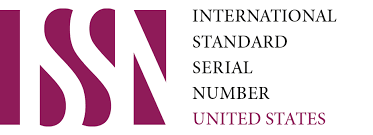Modern solutions in teaching English
DOI:
https://doi.org/10.62480/tjpch.2024.vol28.pp44-46Keywords:
English language education, modern solutions, innovative methodsAbstract
In today's globalized world, proficiency in English is increasingly essential. This article delves into modern solutions for teaching English, emphasizing innovative methods, technological integration, and interactive approaches. Through a literature analysis, various methodologies are explored, followed by a discussion on their effectiveness. The results showcase promising outcomes, leading to conclusions and suggestions for optimizing English language education in the contemporary landscape
References
Bekmuratova U.B. Essay on "The use of innovative technologies in teaching English." Tashkent - 2012
Otaboeva, M.R. The use of modern innovative technologies in foreign language teaching and its effectiveness / M.R. Otaboeva. - Text: neposredstvennyy, elektronnyy // Molodoy uchenyy. - 2017. - №4.2 (138.2). - S. 36– 37. - URL: https://moluch.ru/archive/138/39058/ (data obrashcheniya: 27.04.2020)
N. Q. Xatamova, M. N.mirzayeva. “INTERACTIVE METHODS USED IN ENGLISH LESSONS” (methodical manual), Navoi, 2006, 40 pages.
M. Kholdorova, N. Fayziyeva, F. Rixsittilayeva. "USE OF ASSISTANCE IN FOREIGN LANGUAGE TEACHING". Tashkent: Tashkent State Pedagogical University named after Nizami, 2005
O’. Hoshimov, I. Yakubov. "METHODOLOGY OF TEACHING ENGLISH" (textbook) Tashkent: Sharq Publishing House, 2003
Downloads
Published
Issue
Section
License

This work is licensed under a Creative Commons Attribution-NonCommercial 4.0 International License.
User Rights
Under the Creative Commons Attribution-NonCommercial 4.0 International (CC-BY-NC), the author (s) and users are free to share (copy, distribute and transmit the contribution).
Rights of Authors
Authors retain the following rights:
1. Copyright and other proprietary rights relating to the article, such as patent rights,
2. the right to use the substance of the article in future works, including lectures and books,
3. the right to reproduce the article for own purposes, provided the copies are not offered for sale,
4. the right to self-archive the article.












